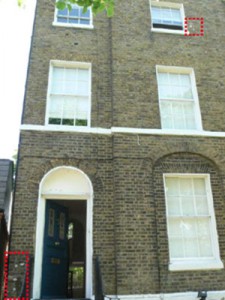 The Purgatory of Damp and Mould
The Purgatory of Damp and Mould
Whether you have an extensive property portfolio, or whether it merely extends to the four walls around you and the roof above your head, you want it to last as long as possible. Well, don’t you?
The older your building, the more likely it is to come with challenges of its own. If it is old and hard to heat worse. Add in a mild to chronic case of mould and builders will tell you you’re looking at a whole lot of trouble. For some of us these problems may only come to light when we try to sell the building and the surveyor raises a few ‘minor’ issues.
Common wisdom tells us that older buildings can be full of character, quaint, unique and come laden with problems. A small tell tale patch of damp or a smoor of mould can be the clue to whole host of questions that spell trouble ahead. That’s the traditional view.
But actually, that is no longer the case. If the fundamental causes of damp, mould and heat loss are targeted and treated at source by a knowledgeable team of professionals – architects, builders and insulation specialists like ourselves working together – then solutions are at hand. You know the scene, the builder shaking his head ruefully faced with another problem. The job total tallying up in his head as our hopes sink.
One Size Doesn’t Fit All
There is another way. Experience has shown us that if you source the right building contractor, one who is sensitive to and aware of the different demands of older buildings; someone who realises that one size does not fit all, you can be on to a real winner in very many ways.
Typically a tender for a building refurbishment will be competitive and won by the lowest cost quote. Owning a heritage property isn’t an avenue to saving costs by short terms fixes. Saving money now won’t necessarily save you money in the longer term. In fact it’s a case of insulate in haste, regret at your leisure.
Heritage Preservation and Retrofit Experience
Liam Brown of Enviroform Solutions explains: “We’ve been involved in a series of heritage preservation and restoration projects where the builder has had to have an acute understanding firstly of the original materials used in the building and how they perform in and react to damp. Based on an initial survey we can diagnose the cause to avoid the symptoms at source.
“It’s not so long ago that few architects would have even thought of being able to retrofit a property to achieve the passive house standard. But now, with advanced materials, building specific solutions and greater knowledge and understand it is possible. Liam explained:
Passive House Standard Explained
Passive House is the world‘s leading standard in energy efficient construction. But what does that mean. Liam explains:
“The Passive House Standard stands for quality, comfort and energy efficiency. Passive Houses require very little energy to achieve a comfortable temperature year round, making conventional heating and air conditioning systems obsolete. While delivering superior levels of comfort, the Passive House Standard also protects the building structure.
“Previously in preserving older buildings, the typical solution to internal wall insulation was and most often still is to us natural breathable materials such as lime and calcium silicate. Insulating internal walls heavily has been avoided due to a fear of causing condensation between the old wall and the new insulation. The temperature drops, water vapour condenses and that can lead to mould.
Cold Bridging Technology
The thinking has changed however using new technology and new materials. Liam outlined how modern insulation is different:
“We can identify where there are cold bridges, where the problem areas potentially can occur and we can head them off at source. Our custom designed aerogel insulation is an extremely effective solution in these instances.
“It is synthetic, breathable yet highly insulating. It also is extremely light and thin when fitted. The knock on effect of that is very positive news for property owners in that the net effect of using a narrow insulation material on your internal walls is that there isn’t a significant reduction in floor space – rentable floor space if you’re in the commercial market.
“In office refurbishment for example space is the key driver. By saving the client 30mm on his wall insulation gains him more revenue from extra rental floor space and at city centre rates this is significant over the life of the property. Depending on the size of the property this can add up to 200ft plus and quite simply the figures speak for themselves.”
“There are projects in which we have supplied the internal wall insulation where some of the best real estate in the world in Central London is still rentable and has retained and increased its value, because the buildings have been future proofed with state of the art insulation. The buildings are in better shape than the day they were built.”
If you have a heritage property that you need to insulate, contact Enviroform Solutions for a survey now.
